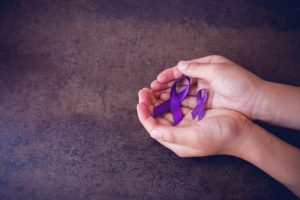Financial abuse—the silent partner of domestic violence
October 19, 2017
 October is Domestic Violence Awareness Month. November kicks off the White Ribbon Campaign to end violence against women. If you were in public spaces in Oakville from October 4 – 6 you would have seen Jamie Black’s art instillation The REDress project, a response to the more than 1000 missing and murdered aboriginal women in Canada.
October is Domestic Violence Awareness Month. November kicks off the White Ribbon Campaign to end violence against women. If you were in public spaces in Oakville from October 4 – 6 you would have seen Jamie Black’s art instillation The REDress project, a response to the more than 1000 missing and murdered aboriginal women in Canada.
In his 2016 report focusing on family violence in Canada, Dr. Gregory Taylor, the now retired Chief Public Health Officer, stated that in 2014 there were 131 Canadians who died at the hands of a family member and 133,920 reported victims of dating or family violence. The majority of these victims were women.
These numbers become even more shocking when, according to Ontario’s Ministry of the Status of Women, less than one third of these crimes are reported to police.
In the 2016 CBC broadcast, The War at Home, Emmy Award winning documentary filmmaker Shelley Saywell summed up the cost of violence against women in Canada to be $1 billion each year. That number includes the costs of the criminal justice system, the police, and counselling.
So, how does financial abuse fit into domestic violence?
Financial abuse occurs when a person uses money or property to control or exploit another person. It is so subtle that it has been called the silent form of domestic violence.
If a woman has been subjected to domestic violence it is virtually assured she has also been subjected to financial abuse.
Of all women who have experienced domestic violence, 99 per cent have been victims of some form of financial abuse.
Financial abuse, like physical abuse, is about control.
If a woman does not have access to money, including bank accounts or credit cards, then her ability to leave an abusive relationship is greatly reduced, possibly nonexistent. It takes money to exist in our modern world.
One form of financial abuse is when the abuser puts all the bills in the woman’s name and then doesn’t pay them, or help to pay them. With nonpayment, it is her credit that is ruined. A poor credit score makes it hard to recover financially.
Forcing someone to sign documents a person doesn’t understand is also a form of financial abuse. Being denied direct access to bank accounts, being kept on an allowance, forcing a person to work in a family business without pay, sabotaging employment opportunities, and being forced to turn over pay cheques, are other forms. This just scratches the surface. The list is long.
Achieving financial freedom and being in control of financial matters is an important life skill for everyone. For women, financial literacy is vital.
All women and girls in our current world need to be self-sufficient. Self-sufficient in all aspects of their lives.
We as a society are aware that domestic violence occurs and that women are overwhelmingly the victims. It is a problem that will be experienced by one out of every four women during their lifetime.
The idea behind dedicating specific months or events to this problem is to shine a light on it.
Wear purple, the symbol of peace, courage and survival, in October. Wear a white ribbon in November. Remember the red dresses hanging in public spaces in Oakville.
It’s up to all of us to keep the conversation going. To empower survivors, and all women, to never be financially dependent on anyone.
